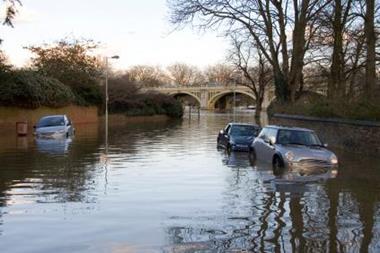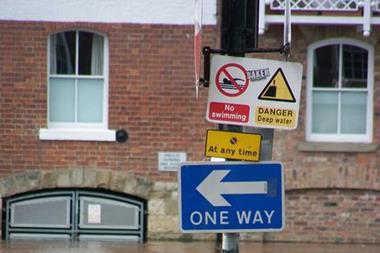Tom Flack says insurers should not be guaranteeing cover in flood risk areas
The issue of insuring against flood risk has long been a hot topic. Last month's issue of a $150m flood bond by Swiss Re is irrefutable evidence that the growing threat of flooding requires solutions both innovative and immediate.
According to the Environment Agency, five million people, 2.3 million homes and 185,000 businesses are at risk of flooding in England and Wales. The latest estimates suggest that flooding could cost the UK economy over £40bn per year.
The insurance industry remains committed to providing cover for existing customers in flood hazard areas at increased, but still subsidised, rates. The government, meanwhile, remains committed to permitting housing development in these areas.
This has created something of a quandary. With over one in ten houses in the UK being built on flood plains, insurers are understandably reluctant to quote for new customers in these areas. At some point, insurers will either have to charge the full risk premium, or refuse to renew cover entirely.
In recent weeks there has been debate over who should be providing cover – that is, should the government step in to underwrite the risk? Insurers say no. Developers, unsurprisingly, say yes. Government, as it tends to do, says maybe.
Yet despite the optimism of some insurers, and the development of technology that helps map flood risk more effectively, it is becoming increasingly clear that the market cannot be left to its own devices to solve the problem.
Indeed, insurers quite literally have no business guaranteeing cover in these areas. And it is certainly unfair for to expect customers to subsidise property developers.
Part of the problem is that cheap insurance has always been available from the private sector, so planners still seem to take availability for granted.
If insurers begin to withdraw from flood risk areas, they will increasingly be occupied by those who cannot afford to live in safer locations.
If the government continues to allow development to continue on flood plains, the government must continue to protect the citizens that elect to live there, particularly if they are poor.
State intervention, on the other hand, could create an alarming precedent. It would give developers carte blanche to pursue housing schemes on areas that would otherwise have been deemed low target.
And there is also a difference between making insurance available and consumers taking out policies; in areas where the state has played a role in underwriting risk, such as Florida, take-up rates have been low.
In order to achieve a sustainable solution, stronger collaboration from government, insurers and planners is needed. The insurance industry could probably do more to advise planning authorities, but it is not the task of the industry to police planners.
There must be a stronger focus on broader strategic solutions, not the site-by-site assessment that is currently the norm.
The best option is to prevent flooding from happening in the first place. In accordance with its statement of principles, the ABI has been lobbying the government to increase its flood defence budget by over a third from its current mark of £564m. Unfortunately, however, in a budget that is already stretched, this seems like wishful thinking.
In the end, however stern the warnings of the insurance industry, only the government can manage flood risk. And if the state intervenes, one way or another the people will have to pay for it . IT



































